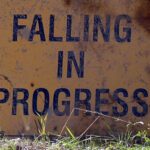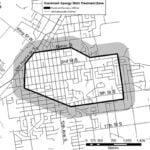Home »

Chronic Wasting Disease on our doorstep
Not that being outside has been particularly inviting lately, what with wildfire smoke driving local air quality to somewhere between acrid and choking. But in case you missed it, hunting season for deer and elk recently opened.
For many, getting out on the land to help feed a family is one of the most important times of the year. In our current pandemic situation, food security becomes even more of a concern. Providing for ourselves takes on a renewed priority. If you don’t believe me, try finding some home canning supplies in Cranbrook right now. Good luck with that.
Many people choose game over domestic meats because of the perceived health benefits. The meat tends to be leaner and it’s free from any growth hormones and antibiotics that are often used in commercial scale agriculture. So what happens when wild game becomes a health risk?
Chronic Wasting Disease (CWD) has cast doubt into the food safety of wild game across large swaths of North America. CWD is one form of a family of diseases known as Transmissible Spongiform Encephalopathies. These are diseases caused by prions which are abnormal proteins that accumulate primarily in the brain. Similar, but different, diseases include Bovine Spongiform Encephalopathy (better known by its nickname “Mad Cow Disease”) in cattle and scrapie in sheep. CWD is only known to infect the deer family, known as cervids, including white-tail and mule deer, elk and moose.
Chronic Wasting Disease is a slow, progressive disorder that is ultimately fatal to the animals it infects. There are no known incidences of the disease being transmitted to humans. However, health agencies including the BC Centre for Disease Control and Health Canada recommend that meat from infected animals should not be eaten by people.
To date, CWD has not been detected in British Columbia. Unfortunately, however, it is close. In June 2019, a deer near Libby, Montana, tested positive. Since then over 60 deer (and one moose) have tested positive for CWD in and around Libby. This is the first documented occurrence west of the Rocky Mountains in Montana and raises serious concerns for the Kootenay region of BC. We’re one deer walkabout away from having CWD-infected deer enter our populations.
In areas of the US where CWD is now entrenched in local deer populations, testing has become part of the process of hunt to table. Gone are the days of celebrating a successful hunt with fresh backstraps cooked on a campfire. Now unbutchered meat is frozen until the CWD test comes back as either negative or positive. If the latter, the meat is disappointingly disposed of at the local landfill.
So what can be done here at home?
- Don’t bring it here. DO NOT bring intact carcasses to BC! CWD is found in Alberta and Saskatchewan, so if you hunt deer or elk in those provinces have your meat processed there. Again, do not bring home intact carcasses or any high-risk tissues (brain, spinal cord, lymph nodes, organs) from outside of BC. How CWD arrived in Libby is unknown, but given its isolation from other deer populations with CWD (see current known distribution of CWD in North America here), there’s a good chance it arrived in a deer carcass hunted elsewhere.
- Testing. The provincial government has been very pro-active on CWD testing and surveillance. This year, as in 2019, all deer hunted in Wildlife Management Units that border Montana and Idaho between September 1 and December 20, 2020 MUST be submitted for CWD testing. That’s WMUs 4-01 through 4-07, from the Alberta border to west of Creston. There are numerous drop-off locations that accept the deer head for testing. That list, along with more information can be found at www.gov.bc.ca/chronicwastingdisease. You can also voluntarily submit elk and moose heads as well, but only deer are mandatory.
- No feeding wild ungulates. A new regulation under The Wildlife Act that prohibits feeding of wild ungulates in the Kootenays (Region 4). In recent heavy snow winters, there’s been lots of controversy on whether we should feed deer and elk. The arrival of CWD on our doorstep has effectively ended that debate. Transmission of CWD occurs through saliva and other bodily fluids. So feeding stations that generate large congregations of deer with high probability of sharing such fluids creates the perfect opportunity for transmission should an infected animal be present. Let deer and elk socially distance to help reduce risks!
- Let predators do their job. Chronic Wasting Disease is a slow, progressive disease that can take a long time to have animals start showing symptoms of poor coordination, stumbling and others. Research has shown, however, that predators – particularly wolves and cougars – are able to reduce CWD prevalence by targeting sick animals. They are able to pick up on cues given out by infected deer long before such symptoms are noticeable to humans. Predators are not going to eliminate CWD from cervid populations where it has become entrenched but they can help keep it at bay from areas where it does not yet occur. In North America, CWD has been largely excluded from areas with resident wolf populations.
In many parts of Canada and the US, CWD is now endemic to local deer and other cervid populations. Testing meat prior to human consumption has become part of the routine of hunting and providing safe and healthy meat for families.
One day, this may yet become a reality for the Kootenays and other parts of BC as well. In the meantime, we need to take all steps to help keep CWD out of the province. Let’s all do our part.
Ian Adams is a wildlife biologist living near Cranbrook. Though not a hunter, he enjoys good venison sausage and shares concerns for local wildlife health.








